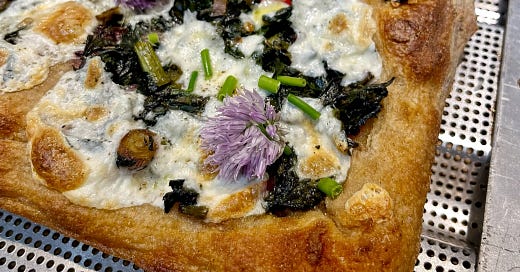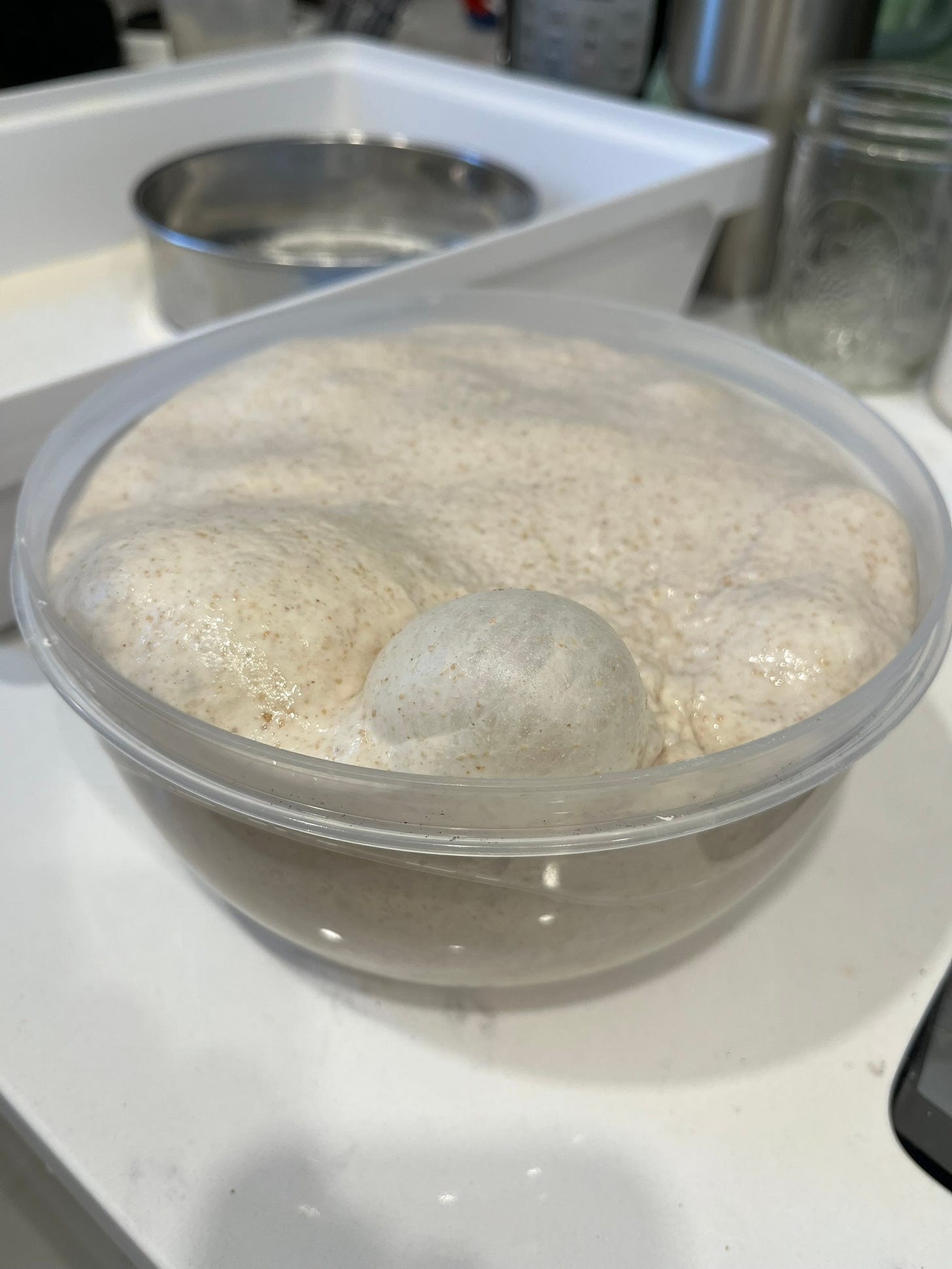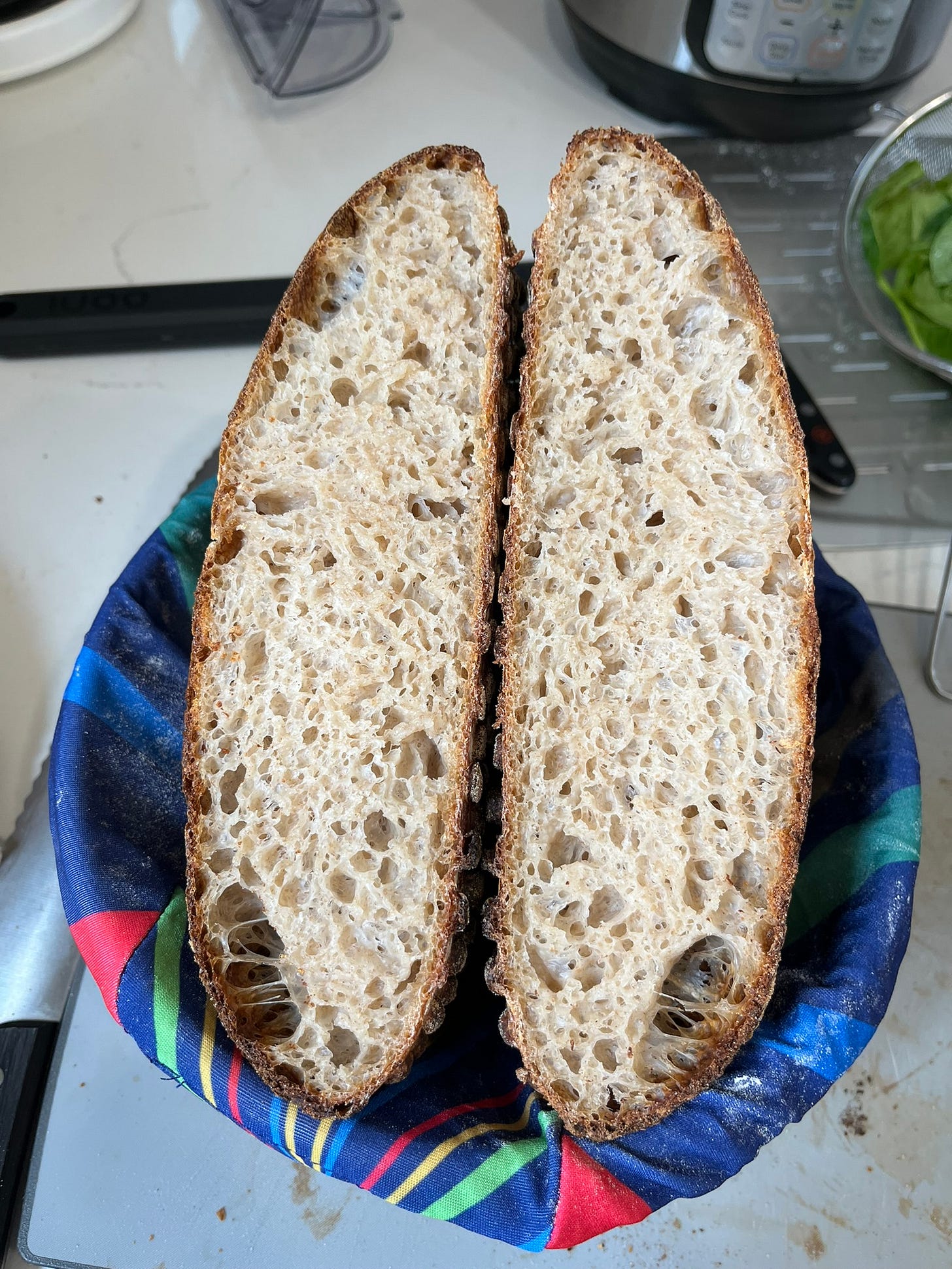Ashitaba, Lamb’s Quarters, and Sorrel Pizza
Here is an overview of my Ashitaba, Lamb’s Quarters, and Sorrel Roman Pizza.
These are greens that we bought from Lani’s Farm from our Sunday farmer’s market in Jackson Heights. I made a sorrel pizza last year, but I had never worked with ashitaba or lamb’s quarters before.
Ashitaba are native to Japan and the name literally means “tomorrow’s leaf” as it can regenerate a new leaf the next day. Considered to be a longevity herb with its anti-inflammatory, antibacterial, and antioxidant properties. It is a member of the carrot family, ashitaba is earthy and slightly bitter, with notes and hints of carrot, celery, or parsley.
Lamb’s quarters (aka wild spinach, goosefoot, or fat hen) are very mild spinach-like with an earthy and nutty taste like chard or beet greens. Rich in calcium, iron, vitamin A, vitamin C, and protein. They work well raw or cooked, and can substitute for common greens like spinach.
Red sorrel is tart and tangy and stands out for its lemon-like acidity—like a natural vinaigrette. It is high in vitamin C, potassium, and antioxidants. Popular in French cuisine.
These three greens work well together as the earthy and bitter ashitaba, the mild neutral lamb’s quarters, and the bright and tangy red sorrel balance each other.
In supporting roles, the Calabrian chilis and oil are spicy umami that bridge the mozzarella and the wild greens, while the garlic chives soften the bitterness and acidity of the ashitaba and sorrel.
This is a 20% whole grain pan pizza, very much inspired by the type of Roman style pizzas you would see at places like Gabriele Bonci’s Pizzarium in Rome.
The thicker parbaked base is ideal for the moist and delicate toppings. The earthy qualities of the whole grain match the same quality in the greens, while the slightly sweet and nutty undertone of the whole grains also soften the sharper flavors of the greens. The malty character of whole wheat also complements the fermented spice of the Calabrian chili and the creamy mozzarella.
Aside from fiber, whole wheat contains more B vitamins, iron, magnesium, zinc, and antioxidants when compared to 100% white flour. A dough with whole grains also has a lower glycemic impact compared to 100% white flour dough.
I was inspired to talk more about whole grains here after attending a recent panel at Archestratus Books in Greenpoint where I caught up with the super talented and knowledgeable Nora from Mel The Bakery. We think about other ingredients in so many dimensions, and there is no reason why we should not do the same for flour and other grains.
This dough was leavened and fermented by Leaven Instant Sourdough (yes, really!). I am still playing around with both the All Purpose and Wild Yeast versions, but so far I’ve loved working with it. The flavors and textures of the breads I’ve made with it have been great! If you are curious and want to try it out, check out my affiliate link.
I’ll end by saying that making unique pizzas only requires you to be curious about ingredients and the world of possibilities. There is a whole universe of possibilities outside of wondering if pineapple belongs on pizza.
Even the great and timeless simple cheese pizza has the potential to be altered in different ways by the pizza maker. Flour choice. Fermentation approach. Oven type. Ingredient sourcing. And so much more.
You can think of pizza making in terms of following a recipe. But there are other ways to approach it as well. You can think like a scientist, an engineer, and even an artist. Pizza making is an opportunity to express oneself.





